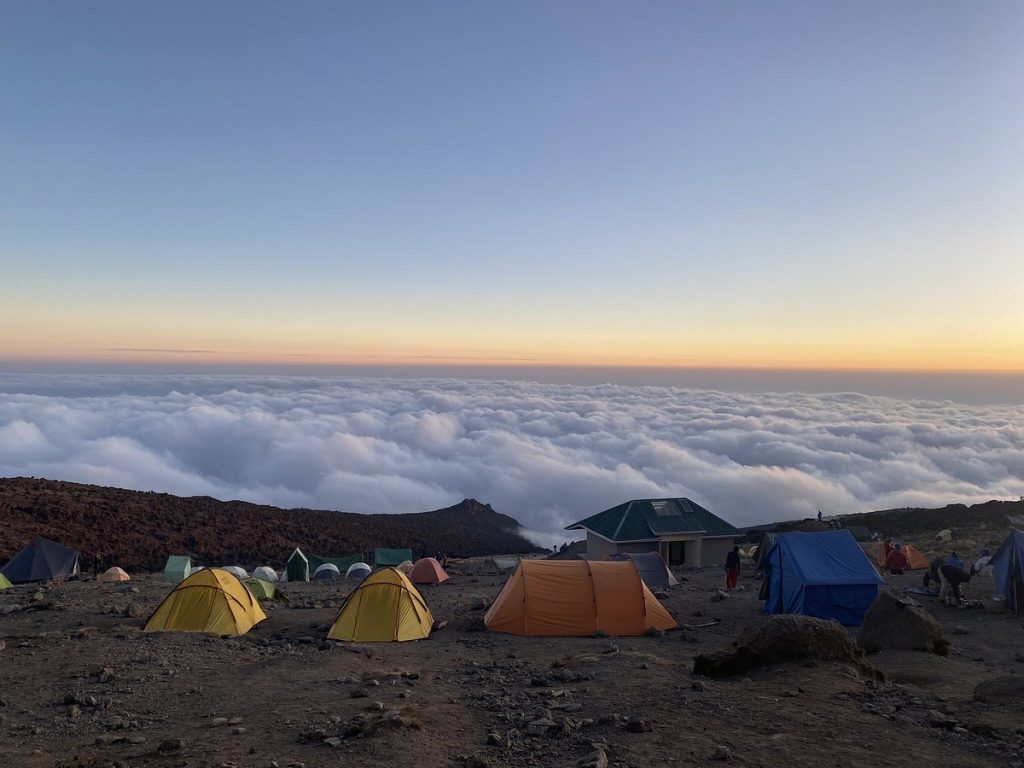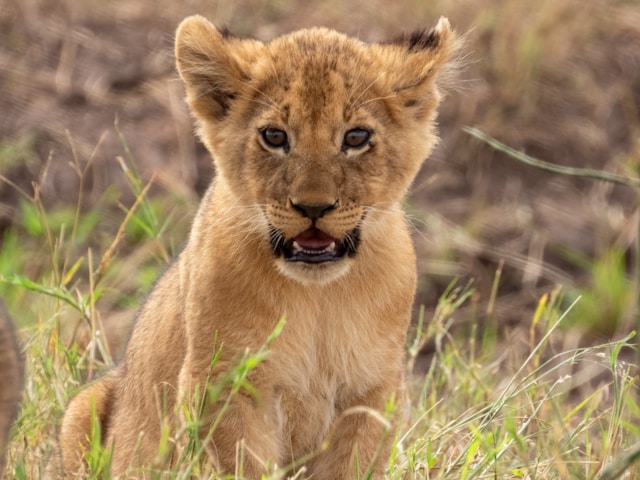Uganda is a landlocked and beautiful country and is mostly referred to as the “The Pearl of Africa” and this is because of its beauty and nature that’s why also its slogan was changed to “Uganda Gifted by Nature” during the hosting of CHOGM. Uganda borders 5 countries which are Sudan, Kenya, Republic of Congo, Tanzania and Rwanda. The capital city of Uganda is Kampala and other cities found in the country include, Jinja, Masaka, Mbarara, Mbale and many more. Uganda is under the rule of the National Resistance Movement (NRM) which is headed by President Yoweri Kaguta Museveni. The party has been in power since 1986 after it over threw the reign of President Milton Obote
Total Area and Size: the country has a total area and size of 236,040 sq km’s, 91,135 (SQ MI). The area under water is 36,330 sq km’s and the area under land is 199,710 sq km’s.
Population: the country’s population in 2023 was estimated to be 48 million people with a growth rate of 2.7%, birth rate of 47.8/1000, infant mortality rate of 64.8/1000, life expectancy of 52.7 and density per sq mi is 392
Climate of the region
The country’s climate is tropical having both dry and rainy seasons.
Geography
Uganda Geographically is bordered by Congo on the west, Sudan on the north, Kenya on the east, and Tanzania and Rwanda on the south. The country lies across the equator and is divided into three main areas that is swampy lowlands, a fertile plateau with wooded hills, and a desert region. Uganda has been called a land of lakes because there are many lakes covering almost a third of the country. Lake Victoria which is the largest in Africa dominates the southern part of the country. The equator crosses the country at a place called Kayabwe
Languages
English is the official language and other languages spoken include Luganda, Swahili and other Tribal languages depending on the tribe
Money Unit
The unit of currency is the Ugandan Shilling. The US dollar ($) is the hard currency of preference. Other currencies preferred in the country include the British Pound and the EURO
Religions
The most famous region in Uganda are Christians, Muslims and some have indigenous beliefs. However today born-again Christians are also rampant and have built as many churches as possible.
Uganda Wildlife
Uganda is a home of 10 National Parks and many game reserves. The National Parks and Game Reserves are home to many animals such as the antelopes, chimpanzees, colobus monkeys, elephants, giraffes, gorillas, leopards, lions and zebras. A thousand species of birds have been recorded. Above all the country is a home to the world’s famous biggest Ape and man’s shiest friend the Mountain Gorillas which are found in Bwindi Impenetrable National Park.
Uganda Culture
The country has more than 30 indigenous languages belonging to distinct linguistic groups, and an equally diverse cultural mosaic of music, art and handicrafts. The country’s most ancient inhabitants, confined to the hilly southwest, are the Batwa and Bambuti Pygmies who were hunter-gatherer.
What to See/Uganda’s Attractions
Uganda’s most attraction are the endangered Mountain gorillas, primates, Big Five animals and a lot of bird species found in different parts of the country. There is also water falls for White water Rafting at Bujagali Falls, Karuma falls, Kalagala falls and many more. The country also hosts the source of River Nile, cultural performances from different cultural groups, Lake Bunyonyi which is the deepest lake, and also Lake Victoria with many Islands which favors Honey moon holidays like the Ssese Islands
What to do in Uganda
Activities to do in Uganda include:
Gorilla trekking
Wildlife and Game viewing in most of the national parks
Chimpanzee Tracking
Boat Rides
Mountaineering/Hiking
Bird Watching safaris
White water Rafting
Cultural safaris
Nature/Forest/Village walks
Bungee Jumping Kayaking and Canoeing tours and City tours
The Places to visit while in Uganda include:
Bwindi Impenetrable forest National Park
Murchison Falls National Park
Queen Elizabeth National Park
Kibale forest National Park
Semuliki Valley National Park
Lake Mburo National Park
Mgahinga National Park
Mountain Rwenzori National Park
Mountain Elgon National Park
Kidepo Valley National Park
Source of River Nile
Cultural sites like the Kasubi Tombs, King’s palace and so on
Bujjagali falls
Lakes like Bunyonyi and Victoria and many more other tourist attractions
Public Holidays in Uganda
Apart from Good Friday and Easter Monday, which fall on variable dates, other public holidays are
1st Jan New Year’s Day, 26th Jan NRM Liberations Day, 8th Mar Women’s Day, 1st May Labour Day, 3rd Jun Uganda Martyrs Day , 9th Jun National Heroes’ Day,9th Oct Independence Day,25th Dec Christmas Day, 26th Dec Boxing Day
Referred to by Winston Churchill as the “Pearl of Africa”, Uganda is a land of true contrasts and great diversity, where the Eastern savannah meets the Western African rainforests. Covering an area of 236,040 square kilometres, the country comprises a unique eco-system from the source of the White Nile on the northwestern shores of Lake Victoria to the snow-capped Ruwenzori Mountains (”mountains of the moon”) in the west, the forests and volcanoes in the southwest to the deserts in the North
Uganda offers some of the most varied wildlife experiences and is one of the world’s topmost birding hotspots, despite being less well known than its more famous neighbours Kenya and Tanzania.
Uganda is most renown for its most famous residents, the country’s national bird, the Crested Crane (also known as Crowned Crane) and the famous but rare Mountain Gorillas of the Bwindi Impenetrable forest. The Silver backed mountain gorillas at Bwindi are half of the world’s remaining groups of mountain gorillas, the other half are found in the Virunga Mountains bordering western Uganda, Rwanda and the Democratic Republic of Congo. A total of only 700 of this species are in existence today, with their habitat constantly threatened. Tracking to see the gorillas is thus one of the most rewarding highlights of an East African wildlife holiday. The plight of the mountain gorilla was made famous by the work of Dian Fossey and the 1988 film Gorillas in the Mist, starring Sigourney Weaver.
Gorilla and Chimp Trekking
Uganda also has one of the richest primate habitats in the world. Apart from the mountain gorillas, the country is home to wild chimpanzees, Red and Black and White colobus, Mangabeys, Blue Monkeys and the elusive L’Hoest’s Monkey.
Sprawling across both sides of the equator, the country offers a network of national parks and wildlife reserves where one can experience savannah plains teeming with antelope, buffalo and elephant as well as lush expanses of tropical rainforest, shimmering lakes and rivers heaving with aquatic life, and the glacial peaks of Africa’s tallest mountain range.
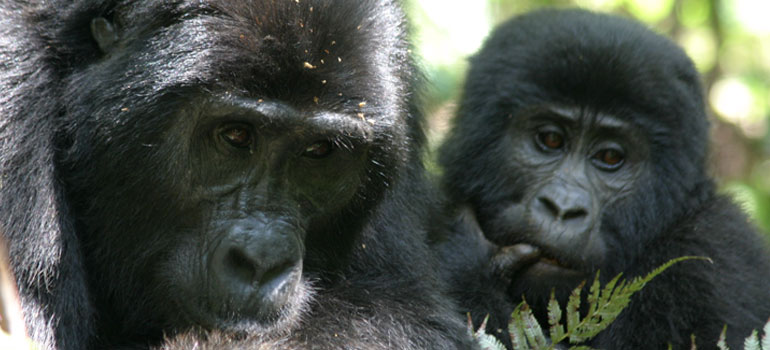
Murchison Falls National Park
Uganda’s largest protected area is the Murchison Falls National Park, whose with large herds of elephant, buffalo, lion, Rothschild’s giraffe and a host of antelope and birdlife.
Immense concentrations of hippos and birds can be observed from morning and afternoon launch trips along the Nile below the spectacular waterfalls which form the main attraction.
Ruwenzori National Park
This national park, covers an area of 996 square kilometres and lies at the foothills of the 120km-long Ruwenzori Mountains or ‘Mountains of the Moon’
The mountain range is a world-class hiking and mountaineering destination. Rising from the Western Rift Valley floor to an elevation of 5100 metres, the Ruwenzori supports large tracts of evergreen and bamboo forest, while the higher moorland zone is provides a dense cover of giant heathers, lobelias and groundsels.
Ruwenzori Mountain National Park offers visitors a unique experience of an Afro-Montane rainforest – whether an experienced climber or casual day hiker. The main attraction is the luxuriant vegetation found above 3000m, which includes the giant Lobelias, Heather and Groundsel. Ruwenzori Mountains National Park is also home to the hyrax, blue monkey, chimpanzee, giant forest hog and many unique bird species such as the Rwenzori Touraco, the handsome francolin and the olive pigeon. The best time for mountaineering is during the dry seasons from mid-December to the end of March and from June through mid-August.
Queen Elizabeth National Park
Set majestically in the shadow of the Ruwenzori, flanking Lakes Edward and George, the lush savannah of Queen Elizabeth National Park offers prime grazing to buffalo, elephant and various antelope. Over 600 bird species can be found in this park alone, so proving to be an ornithological haven.
Other unique mammalian species include the elusive giant forest hog, and the legendary tree-climbing lions (the other group being found in Tanzania’s Lake Manyara national park).
Of all of Uganda’s forested reserves, Bwindi Impenetrable National Park is best known for its superb gorilla tracking, but it also provides refuge to elephant, chimpanzee, monkeys and various small antelope, as well as 23 bird species unique to the Albertine Rift*. Uganda’s star attraction is the endangered mountain gorilla, the bulkiest of living primates, and among the most peaceable. Staring into the pensive brown eyes of these gentle giants, is as humbling as it is thrilling; no less so when one realises that fewer than 700 individuals survive, divided between Bwindi National Park and the Virunga Mountains of Rwanda.
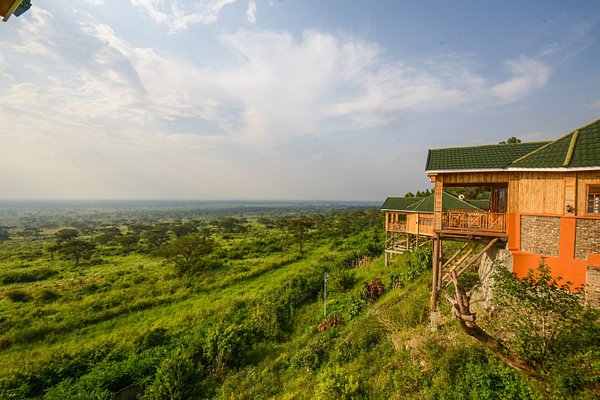
The Albertine Rift
Stretching from the northern end of Lake Albert to the southern end of Lake Tanganyika and extending through 5 African countries – Uganda, Rwanda, Democratic Republic of Congo, Burundi and Tanzania, the Albertine Rift is one of Africa’s most important sites for the conservation of biodiversity.
Its huge diversity of habitats incorporates the ice fields on top of the Rwenzori mountains at 5,000 metres (16,000 feet), active volcanoes, hot springs, bamboo, alpine vegetation, montane forest, and savannah and down to the lowland forests of Semuliki at 600 metres (1,800 feet). The Albertine Rift has been identified as an Endemic Bird Area by Birdlife International, an Eco-region by the World Wildlife Fund, and a Biodiversity Hotspot by Conservation International.
Kibale National Park
Covering an area of 776 sq kms, is a haven for those seeking a unique experience to track and observe different species of primates.
Kibale’s major attraction, however, is the opportunity to track habituated chimpanzees – these delightful apes, more closely related to humans than to any other living creature (sharing about 95% of human genes), are tremendous fun to watch as they squabble and play in fruiting trees. The park is home to a population of more than 1000 chimpanzees, of which one 80-strong community has been habituated to tourist visits.
The park covers 331 square kilometres and provides a network of shady forest trails offering much to delight botanists and butterfly lovers, while birders are in for a treat with nearly 350 species recorded including the endemic Peregrine’s ground thrush.
The elusive forest elephant, smaller and hairier than its savannah counterpart, moves seasonally into the developed part of the park, while other terrestrial mammals include buffalo, giant forest hog and a half dozen antelope species. The park also hosts other primate species, including the acrobatic red colobus, the black-and-white colobus, and the handsome albeit elusive L’Hoest’s monkey.
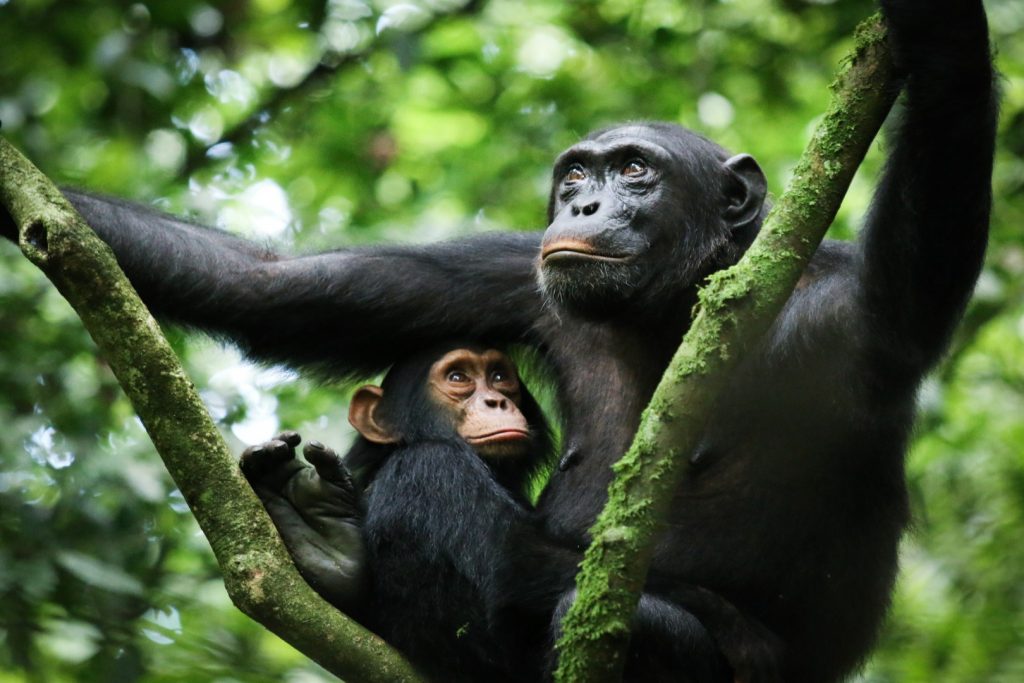
Lake Mburo National Park
Lake Mburo National Park is the closest game reserve to Kampala, comprising a series of swamp-fringed lakes known for their rich birdlife, notably the secretive African finfoot.
The green acacia woodland surrounding the lake harbours dense populations of zebra, warthog, buffalo, impala and various other grazers, including the last surviving Ugandan population of eland, the largest of African antelope.
Lake Buntoni and Mutanda
The emerald green lake of Mutanda, in Uganda, with its distinctive hump-back islands, seen in the distance from Mgahinga, has pristine beauty.
The finger-like lake of Bunyonyi literally “a place of little birds” lies among steeply terraced hillsides near the hill town of Kabale; it is an ideal stopping point on the way to Bwindi and Mgahinga.
Mount Elgon National Park
Set along the border with Kenya, Mount Elgon National Park encompasses the 4321 metre mountain for which it is named.
Mount Elgon is thought to have the largest base of any extinct volcano in the world. A lush mosaic of Afro-montane forest, grassland and moorland habitats makes this park a highly rewarding destination for hikers and other natural history enthusiasts.

